use result of the ray from wall test instead of casting floor/ceiling ray
As you want to have separate tiles on ceiling and floor then you should use ray marching like ray cast. Meaning cast one ray per each column of screen and iterate it by all map cell crossings until a wall is hit. However instead of rendering only on wall hit you have to render on each cell hit. Something like on this image:

So red line is cast ray (orange is just a mirror). Each rendered cell of map is hit with the ray in 2 points. You should know the map cell position of each hit and also its screen coordinate from the ray casting. So you just need to add the perpendicular distance to camera and render the line segment as a perspective correct interpolated textured line for floor and ceiling. The wall is always just vertical non perspective textured line. The texture coordinates are taken from the map position of hit (fractional part of coordinates). In code its a bit messy but here it is:
void Doom3D::draw_scanline(int sx,int sy0,int sy1,int symin,int tx0,int ty0,int tx1,int ty1,BYTE *li)
{
// affine texture mapping (front side of walls) sy0>sy1
union { DWORD dd; BYTE db[4]; } cc;
int sy,tx,ty,ktx,kty,dtx,dty,ctx,cty,dsy;
dsy=sy1-sy0; if (dsy<0) dsy=-dsy;
ktx=0; dtx=tx1-tx0; if (dtx>0) ktx=+1; else { ktx=-1; dtx=-dtx; } tx=tx0; ctx=0;
kty=0; dty=ty1-ty0; if (dty>0) kty=+1; else { kty=-1; dty=-dty; } ty=ty0; cty=0;
if (dsy) for (sy=sy0;sy>=sy1;sy--)
{
if ((sy>=0)&&(sy<scr.ys)&&(sy<=symin))
if ((tx>=0)&&(tx<ptxr->xs)&&(ty>=0)&&(ty<ptxr->ys))
{
cc.dd=ptxr->pyx[ty][tx];
cc.db[0]=li[cc.db[0]];
cc.db[1]=li[cc.db[1]];
cc.db[2]=li[cc.db[2]];
scr.pyx[sy][sx]=cc.dd;
}
for (ctx+=dtx;ctx>=dsy;) { ctx-=dsy; tx+=ktx; }
for (cty+=dty;cty>=dsy;) { cty-=dsy; ty+=kty; }
}
}
void Doom3D::draw_scanline(int sx,int sy0,int sy1,int sz0,int sz1,int symin,int tx0,int ty0,int tx1,int ty1,BYTE *li)
{
// perspective correct mapping (floor, top side of walls, ceiling) sy0>sy1
union { DWORD dd; BYTE db[4]; } cc;
int sy,tx,ty,dsy,dtx,dty,n,dn;
int a,_z0,_z1,_tx;
const int acc0=16;
const int acc1=8;
_tx=tx0-(tx0%ptxr->ys);
tx0-=_tx;
tx1-=_tx;
dsy=sy1-sy0; dn=abs(dsy);
dtx=tx1-tx0;
dty=ty1-ty0;
if (sz0==0) return; _z0=(1<<acc0)/sz0;
if (sz1==0) return; _z1=(1<<acc0)/sz1;
if (dn) for (n=0;n<=dn;n++)
{
sy=sy0+((n*dsy)/dn);
a=((n<<acc1)*_z1)/(((dn-n)*_z0)+(n*_z1)); // perspective correction a=<0,1<<acc1> (https://en.wikipedia.org/wiki/Texture_mapping)
tx=tx0+((a*dtx)>>acc1)+_tx;
ty=ty0+((a*dty)>>acc1);
if ((sy>=0)&&(sy<scr.ys)&&(sy<=symin))
if ((tx>=0)&&(tx<ptxr->xs)&&(ty>=0)&&(ty<ptxr->ys))
{
cc.dd=ptxr->pyx[ty][tx];
cc.db[0]=li[cc.db[0]];
cc.db[1]=li[cc.db[1]];
cc.db[2]=li[cc.db[2]];
scr.pyx[sy][sx]=cc.dd;
}
}
}
void Doom3D::draw_cell(_ray &p)
{
BYTE *li;
DWORD m;
int tx0,tx1,ty0,ty1,sy,sy0,sy1,sy2,sy3,sz0,sz1,q;
int sy4,sy5;
//sy0>=sy1
sy0=sys2+divide(double((1.0+2.0*plr.z)*_Doom3D_cell_size)*wall,p.l0);
sy1=sy0 -divide(double((p.map>>24)<<1 )*wall,p.l0);
sy2=sys2+divide(double((1.0+2.0*plr.z)*_Doom3D_cell_size)*wall,p.l1);
sy3=sy2 -divide(double((p.map>>24)<<1 )*wall,p.l1);
sy4=sys2-divide(double((1.0-2.0*plr.z)*_Doom3D_cell_size)*wall,p.l1);
sy5=sys2-divide(double((1.0-2.0*plr.z)*_Doom3D_cell_size)*wall,p.l0);
sz0=double(p.l0*_Doom3D_cell_size);
sz1=double(p.l1*_Doom3D_cell_size);
// select mipmap resolution
ty0=divide(double(_Doom3D_cell_size<<1)*wall,p.l0);
for (q=tm-1;q>=0;q--)
{
ptxr=txr+q;
if (ty0<=ptxr->ys) break;
}
if (_no_mipmap) ptxr=txr;
// mouse select
if (p.sx==round(keys.mx))
if (keys.my>=sy3)
if (keys.my<=sy0)
if ((keys.my>=map2.ys)||(keys.mx>=map2.xs))
{
keys.kx=p.x;
keys.ky=p.y;
}
if ((p.map&0xFF)==0xFF) { sy1=sy0; sy3=sy2; }
// wall
if ((sy1<p.sy1)&&((p.map&0xFF)!=0xFF))
{
tx0=ptxr->ys*(p.map&0xFF);
if (p.tp0=='H') { li=liH; tx0+=double(double(ptxr->ys-1)*(p.x0-floor(p.x0))); }
if (p.tp0=='V') { li=liV; tx0+=double(double(ptxr->ys-1)*(p.y0-floor(p.y0))); }
draw_scanline(p.sx,sy0,sy1,p.sy1,tx0,0,tx0,((p.map>>24)*(ptxr->ys-1))/_Doom3D_cell_size,li);
p.sy1=sy1;
}
// ceiling
if ((p.map&0xFF0000)!=0xFF0000)
{
q=ptxr->ys*((p.map>>16)&0xFF);
tx0=double(double(ptxr->ys-1)*(p.x0-double(p.x)))+q;
ty0=double(double(ptxr->ys-1)*(p.y0-double(p.y)));
tx1=double(double(ptxr->ys-1)*(p.x1-double(p.x)))+q;
ty1=double(double(ptxr->ys-1)*(p.y1-double(p.y)));
draw_scanline(p.sx,sy5,sy4,sz0,sz1,p.sy1,tx0,ty0,tx1,ty1,liF);
}
// floor/top side
if ((sy3<p.sy1)&&((p.map&0xFF00)!=0xFF00))
{
q=ptxr->ys*((p.map>>8)&0xFF);
tx0=double(double(ptxr->ys-1)*(p.x0-double(p.x)))+q;
ty0=double(double(ptxr->ys-1)*(p.y0-double(p.y)));
tx1=double(double(ptxr->ys-1)*(p.x1-double(p.x)))+q;
ty1=double(double(ptxr->ys-1)*(p.y1-double(p.y)));
draw_scanline(p.sx,sy1,sy3,sz0,sz1,p.sy1,tx0,ty0,tx1,ty1,liF);
p.sy1=sy3;
}
if (sy3<p.sy1) p.sy1=sy3;
}
void Doom3D::draw()
{
tbeg();
_ray p;
DWORD x,y,c,m;
DWORD mx,mx0,mx1;
DWORD my,my0,my1;
double a,a0,da,dx,dy,l;
double xx0,yy0,dx0,dy0,ll0,dl0;
double xx1,yy1,dx1,dy1,ll1,dl1;
// compute diffuse + ambient lighting LUT (light scaled shades of gray)
c=155.0+fabs(100.0*sin( plr.a)); for (x=0;x<256;x++) liH[x]=(x*c)>>8; // H wall
c=155.0+fabs(100.0*cos( plr.a)); for (x=0;x<256;x++) liV[x]=(x*c)>>8; // V wall
c=155.0+fabs(100.0*cos(30.0*deg)); for (x=0;x<256;x++) liF[x]=(x*c)>>8; // floor, wall top side
// [2D map]
m=_Doom3D_edit_cell_size;
for (my0=0,my1=m,y=0;y<map.ys;y++,my0=my1,my1+=m) // map.pyx[][]
for (mx0=0,mx1=m,x=0;x<map.xs;x++,mx0=mx1,mx1+=m)
{
c=0x00010101*((0x40+(0x40*(map.pyx[y][x]>>24)))/_Doom3D_cell_size);
for (my=my0;my<my1;my++)
for (mx=mx0;mx<mx1;mx++)
map2.pyx[my][mx]=c;
}
c=0x00202020; // map grid
for (y=0;y<map2.ys;y+=m) for (x=0;x<map2.xs;x++) map2.pyx[y][x]=c;
for (x=0;x<map2.xs;x+=m) for (y=0;y<map2.ys;y++) map2.pyx[y][x]=c;
x=keys.kx*m; // selected cell
y=keys.ky*m;
map2.bmp->Canvas->Pen->Color=0x0020FFFF;
map2.bmp->Canvas->MoveTo(x ,y );
map2.bmp->Canvas->LineTo(x+m,y );
map2.bmp->Canvas->LineTo(x+m,y+m);
map2.bmp->Canvas->LineTo(x ,y+m);
map2.bmp->Canvas->LineTo(x ,y );
map2.bmp->Canvas->Pen->Mode=pmMerge;
// [cast rays]
a0=plr.a-(0.5*view_ang);
da=divide(view_ang,scr.xs-1);
da*=scale_x;
for (a=a0,x=0;x<scr.xs;x+=scale_x,a+=da)
{
// grid V-line hits
ll0=1.0e20; dl0=0.0; dx0=cos(a); const char tp0='V';
if (dx0<0.0) { xx0=floor(plr.x); dx0=-1.0; }
if (dx0>0.0) { xx0=ceil (plr.x); dx0=+1.0; }
if (fabs(dx0)>1e-6) { dy0=tan(a); yy0=plr.y+((xx0-plr.x)*dy0); dy0*=dx0; dx=xx0-plr.x; dy=yy0-plr.y; ll0=sqrt((dx*dx)+(dy*dy)); dl0=sqrt((dx0*dx0)+(dy0*dy0)); }
// grid H-line hits
ll1=1.0e20; dl1=0.0; dy1=sin(a); const char tp1='H';
if (dy1<0.0) { yy1=floor(plr.y); dy1=-1.0; }
if (dy1>0.0) { yy1=ceil (plr.y); dy1=+1.0; }
if (fabs(dy1)>1e-6) { dx1=divide(1.0,tan(a)); xx1=plr.x+((yy1-plr.y)*dx1); dx1*=dy1; dx=xx1-plr.x; dy=yy1-plr.y; ll1=sqrt((dx*dx)+(dy*dy)); dl1=sqrt((dx1*dx1)+(dy1*dy1)); }
p.ang=a;
p.sx =x;
p.sy0=scr.ys;
p.sy1=scr.ys;
// first hit
if (ll0<ll1){ p.tp0=tp0; p.x0=xx0; p.y0=yy0; p.l0=ll0; xx0+=dx0; yy0+=dy0; ll0+=dl0; }
else { p.tp0=tp1; p.x0=xx1; p.y0=yy1; p.l0=ll1; xx1+=dx1; yy1+=dy1; ll1+=dl1; }
p.l0*=cos(p.ang-plr.a); // anti fish eye
p.map=0xFFFFFFFF; p.x=p.x0; p.y=p.y0;
for (;;)
{
// closest hit
if (ll0<ll1) { p.tp1=tp0; p.x1=xx0; p.y1=yy0; p.l1=ll0; xx0+=dx0; yy0+=dy0; ll0+=dl0; }
else { p.tp1=tp1; p.x1=xx1; p.y1=yy1; p.l1=ll1; xx1+=dx1; yy1+=dy1; ll1+=dl1; }
p.x=floor(0.5*(p.x0+p.x1)); // actaul cell position
p.y=floor(0.5*(p.y0+p.y1));
p.l1*=cos(p.ang-plr.a); // anti fish eye
// edge of map crossed?
if ((p.x>=0)&&(p.x<map.xs)&&(p.y>=0)&&(p.y<map.ys)) p.map=map.pyx[p.y][p.x]; else break;
// render
draw_cell(p); // scan line
if (p.sy1<=0) break; // scan line reached top of screen
// prepare next cell position
p.tp0=p.tp1; p.x0=p.x1; p.y0=p.y1; p.l0=p.l1;
}
// copy skiped scan lines
for (mx=1;mx<scale_x;mx++)
if (x+mx<scr.xs)
for (y=0;y<scr.ys;y++)
scr.pyx[y][x+mx]=scr.pyx[y][x];
// render map ray
if (x==sxs2) map2.bmp->Canvas->Pen->Color=0x000000FF;
if ((x==0)||(x==sxs2+scale_x)) map2.bmp->Canvas->Pen->Color=0x00002020;
map2.bmp->Canvas->MoveTo(plr.x*m,plr.y*m);
map2.bmp->Canvas->LineTo(p.x1*m,p.y1*m);
}
map2.bmp->Canvas->Pen->Mode=pmCopy;
map2.bmp->Canvas->Pen->Color=0x000000FF;
map2.bmp->Canvas->Brush->Color=0x000000FF;
c=focus*m;
map2.bmp->Canvas->Ellipse(plr.x*m-c,plr.y*m-c,plr.x*m+c,plr.y*m+c);
scr.bmp->Canvas->Draw(0,0,map2.bmp);
// ... here HUD and info texts continues I skipped it to keep this simple
}
render floor and ceiling without per pixel of row/col raycast
Simple ray casters do use non textured floor/ceiling which makes this simple just render half of screen with sky and the other with ground color before rendering the walls (or after it if rendered walls start and end is remembered):

something like this in code:
int x,y,sxs=sxs2<<1,sys=sys2<<1;
// simple color sky/ceiling
for (y=0;y<sys2;y++)
for (x=0;x<sxs;x++)
scr.pyx[y][x]=0x000080FF;
for (y=sys2;y<sys;y++)
for (x=0;x<sxs;x++)
scr.pyx[y][x]=0x00404040;
To make this more nice usually for outdoor parts of map sky texture is added that covers the ceiling. It does not move with player just rotates. So you can map a sky textured quad to upper half of view that just rotates with -plr.a Here overview of the geometry:

The bigger radius R is half of texture resolution and the smaller I empirically compute by r=R*sin(0.5*view_ang) as its looking best to me (however the true value should be computed from screen aspect ratio and perspective focal length and view_ang).
Here some code for this:
const int x0=0,x1=sxs2<<1,y0=0,y1=sys2,y2=sys2<<1;
int sx[4]={x0,x0,x1,x1},
sy[4]={y0,y1,y1,y0},
tx[4],ty[4],dx,dy;
float a,r,R;
R=sky.xs>>1; // sky texture inscribed circle radius
r=R*sin(0.5*view_ang); // smaller radius (visible portion of sky)
dx=sky.xs>>1; // mid of sky texture
dy=sky.ys>>1;
a=plr.a-(0.5*view_ang);
tx[0]=float(R*cos(a))+dx;
ty[0]=float(R*sin(a))+dy;
a=plr.a-(0.5*view_ang);
tx[1]=float(r*cos(a))+dx;
ty[1]=float(r*sin(a))+dy;
a=plr.a+(0.5*view_ang);
tx[2]=float(r*cos(a))+dx;
ty[2]=float(r*sin(a))+dy;
a=plr.a+(0.5*view_ang);
tx[3]=float(R*cos(a))+dx;
ty[3]=float(R*sin(a))+dy;
polygon2D(scr,sky,sx,sy,tx,ty,4);
The ground (and indoor ceiling) can be done similarly but the radius R must be a fraction of whole texture. The player position in map must be scaled to texture half size - R and added to the texture coordinates. However the texture resolution must be big enough otherwise it will not look as good (Ideally the empty space should match the resolution of your map size * wall texture resolution... So if R is half the empty space will be also R then its done like this:
const int x0=0,x1=sxs2<<1,y0=0,y1=sys2,y2=sys2<<1;
int sx[4]={x0,x0,x1,x1},
sy[4]={y1,y2,y2,y1},
tx[4],ty[4],i,dx,dy,dr;
float a,r,R;
R=sky.xs>>2; // sky texture inscribed circle radius /2 so empty space is also R
r=R*sin(0.5*view_ang); // smaller radius (visible portion of sky)
dx=sky.xs>>1; // mid of sky texture
dy=sky.ys>>1;
a=float(R)/float(map.xs); // add player position skaled to empty space
dx+=float(plr.x*a);
dy+=float(plr.y*a);
a=plr.a-(0.5*view_ang);
tx[0]=float(R*cos(a))+dx;
ty[0]=float(R*sin(a))+dy;
a=plr.a-(0.5*view_ang);
tx[1]=float(r*cos(a))+dx;
ty[1]=float(r*sin(a))+dy;
a=plr.a+(0.5*view_ang);
tx[2]=float(r*cos(a))+dx;
ty[2]=float(r*sin(a))+dy;
a=plr.a+(0.5*view_ang);
tx[3]=float(R*cos(a))+dx;
ty[3]=float(R*sin(a))+dy;
polygon2D(scr,sky,sx,sy,tx,ty,4);
In case you want to use smaller textures then your polygon rendering must be capable of handling texture coordinates like GL_REPEAT in OpenGL. The function polygon2D(scr,sky,sx,sy,tx,ty,4) is just simple/ugly/slow/unoptimized 2D textured polygon render I bustled yesterday just to test this (as I did not want to mess my optimized rendering routines for #1 methods which support only scan lines instead of polygons anyway) where sx,sy are array of screen coordinates, tx,ty are arrays f texture coordinates, 4 is number of vertexes and scr,txr are target and source textures. The code is just a port of this fill_quad without the shadings and SSD1306 related stuff. Here full code:
const int ys_max=1024;
int bufl_vx[ys_max],bufr_vx[ys_max];
int bufl_tx[ys_max],bufr_tx[ys_max];
int bufl_ty[ys_max],bufr_ty[ys_max];
void _fill2D_line(Texture2D &scr,Texture2D &txr,int vx0,int vy0,int tx0,int ty0,int vx1,int vy1,int tx1,int ty1)
{
int *bvx,*btx,*bty;
int i,n,cvx,cvy,ctx,cty,svx,svy,stx,sty;
// target buffer depend on y direction (before point ordering)
if (vy0<vy1){ bvx=bufl_vx; btx=bufl_tx; bty=bufl_ty; }
else { bvx=bufr_vx; btx=bufr_tx; bty=bufr_ty; }
// order points so joined edges are interpolated the same way
if (vx0>vx1)
{
i=vx0; vx0=vx1; vx1=i;
i=vy0; vy0=vy1; vy1=i;
i=tx0; tx0=tx1; tx1=i;
i=ty0; ty0=ty1; ty1=i;
}
// line DDA parameters
vx1-=vx0; svx=0; if (vx1>0) svx=+1; if (vx1<0) { svx=-1; vx1=-vx1; } if (vx1) vx1++; n=vx1;
vy1-=vy0; svy=0; if (vy1>0) svy=+1; if (vy1<0) { svy=-1; vy1=-vy1; } if (vy1) vy1++; if (n<vy1) n=vy1;
tx1-=tx0; stx=0; if (tx1>0) stx=+1; if (tx1<0) { stx=-1; tx1=-tx1; } if (tx1) tx1++; if (n<tx1) n=tx1;
ty1-=ty0; sty=0; if (ty1>0) sty=+1; if (ty1<0) { sty=-1; ty1=-ty1; } if (ty1) ty1++; if (n<ty1) n=ty1;
// single pixel (not a line)
if (!n)
{
if ((vy0>=0)&&(vy0<scr.ys))
{
bufl_vx[vy0]=vx0; bufl_tx[vy0]=tx0; bufl_ty[vy0]=ty0;
bufr_vx[vy0]=vx0; bufr_tx[vy0]=tx0; bufr_ty[vy0]=ty0;
}
return;
}
// horizontal line
if (svy==0) return;
// ND DDA algo i is parameter
for (cvx=cvy=ctx=cty=n,i=0;;)
{
if ((vy0>=0)&&(vy0<scr.ys)){ bvx[vy0]=vx0; btx[vy0]=tx0; bty[vy0]=ty0; }
i++; if (i>=n) break;
cvx-=vx1; if (cvx<=0){ cvx+=n; vx0+=svx; }
cvy-=vy1; if (cvy<=0){ cvy+=n; vy0+=svy; }
ctx-=tx1; if (ctx<=0){ ctx+=n; tx0+=stx; }
cty-=ty1; if (cty<=0){ cty+=n; ty0+=sty; }
}
}
void _fill2D(Texture2D &scr,Texture2D &txr,int Y0,int Y1)
{
int vx0,vx1,tx0,tx1,ty0,ty1;
int vy,i,n,cvx,ctx,cty,svx,stx,sty;
// fill horizontal lines
for (vy=Y0;vy<=Y1;vy++)
{
// horizontal line to render
vx0=bufl_vx[vy]; tx0=bufl_tx[vy]; ty0=bufl_ty[vy];
vx1=bufr_vx[vy]; tx1=bufr_tx[vy]; ty1=bufr_ty[vy];
if ((vx0< 0)||(vx1< 0)) continue;
if ((vx0< 0)&&(vx1< 0)) continue;
if ((vx0>=scr.xs)&&(vx1>=scr.xs)) continue;
// line DDA parameters
vx1-=vx0; svx=0; if (vx1>0) svx=+1; if (vx1<0) { svx=-1; vx1=-vx1; } if (vx1) vx1++; n=vx1;
tx1-=tx0; stx=0; if (tx1>0) stx=+1; if (tx1<0) { stx=-1; tx1=-tx1; } if (tx1) tx1++; if (n<tx1) n=tx1;
ty1-=ty0; sty=0; if (ty1>0) sty=+1; if (ty1<0) { sty=-1; ty1=-ty1; } if (ty1) ty1++; if (n<ty1) n=ty1;
// single pixel (not a line)
if (!n)
{
if ((vx0>=0)&&(vx0<scr.xs)) scr.pyx[vy][vx0]=txr.pyx[ty0][tx0];
continue;
}
// ND DDA algo i is parameter
for (cvx=ctx=cty=n,i=0;;)
{
while (tx0<0) tx0+=txr.xs;
while (ty0<0) ty0+=txr.ys;
while (tx0>=txr.xs) tx0-=txr.xs;
while (ty0>=txr.ys) ty0-=txr.ys;
if ((vx0>=0)&&(vx0<scr.xs)) scr.pyx[vy][vx0]=txr.pyx[ty0][tx0];
i++; if (i>=n) break;
cvx-=vx1; if (cvx<=0){ cvx+=n; vx0+=svx; }
ctx-=tx1; if (ctx<=0){ ctx+=n; tx0+=stx; }
cty-=ty1; if (cty<=0){ cty+=n; ty0+=sty; }
}
}
}
void polygon2D(Texture2D &scr,Texture2D &txr,int *vx,int *vy,int *tx,int *ty,int n)
{
int i,j,y,Y0,Y1;
// y range to render
Y0=Y1=vy[0];
for (i=1;i<n;i++)
{
if (Y0>vy[i]) Y0=vy[i];
if (Y1<vy[i]) Y1=vy[i];
}
// clip to screen in y axis
if ((Y1<0)||(Y0>=scr.ys)) return;
if (Y0< 0) Y0= 0;
if (Y1>=scr.ys) Y1=scr.ys-1;
// clear buffers
for (y=Y0;y<=Y1;y++)
{
bufl_vx[y]=-1;
bufr_vx[y]=-1;
}
// render circumference
for (j=n-1,i=0;i<n;j=i,i++)
_fill2D_line(scr,txr,vx[i],vy[i],tx[i],ty[i],vx[j],vy[j],tx[j],ty[j]);
// fill horizontal lines
_fill2D(scr,txr,Y0,Y1);
}
And finally preview (using sky texture for both sky and ground):

The render does not have perspective correct interpolation but for single big texture its not a big problem. In case you want also jumps then you need recompute R,r with the use of z position of player or use Another option to compute the texture coordinates by simply casting 4 rays (one for each corner of half screen rectangle) and check where it hit map edges.
The math behind can be found in here:
However beware your perspective must match the ray cast otherwise alignment artifacts may occur (or ground move with slightly different speed than walls).




